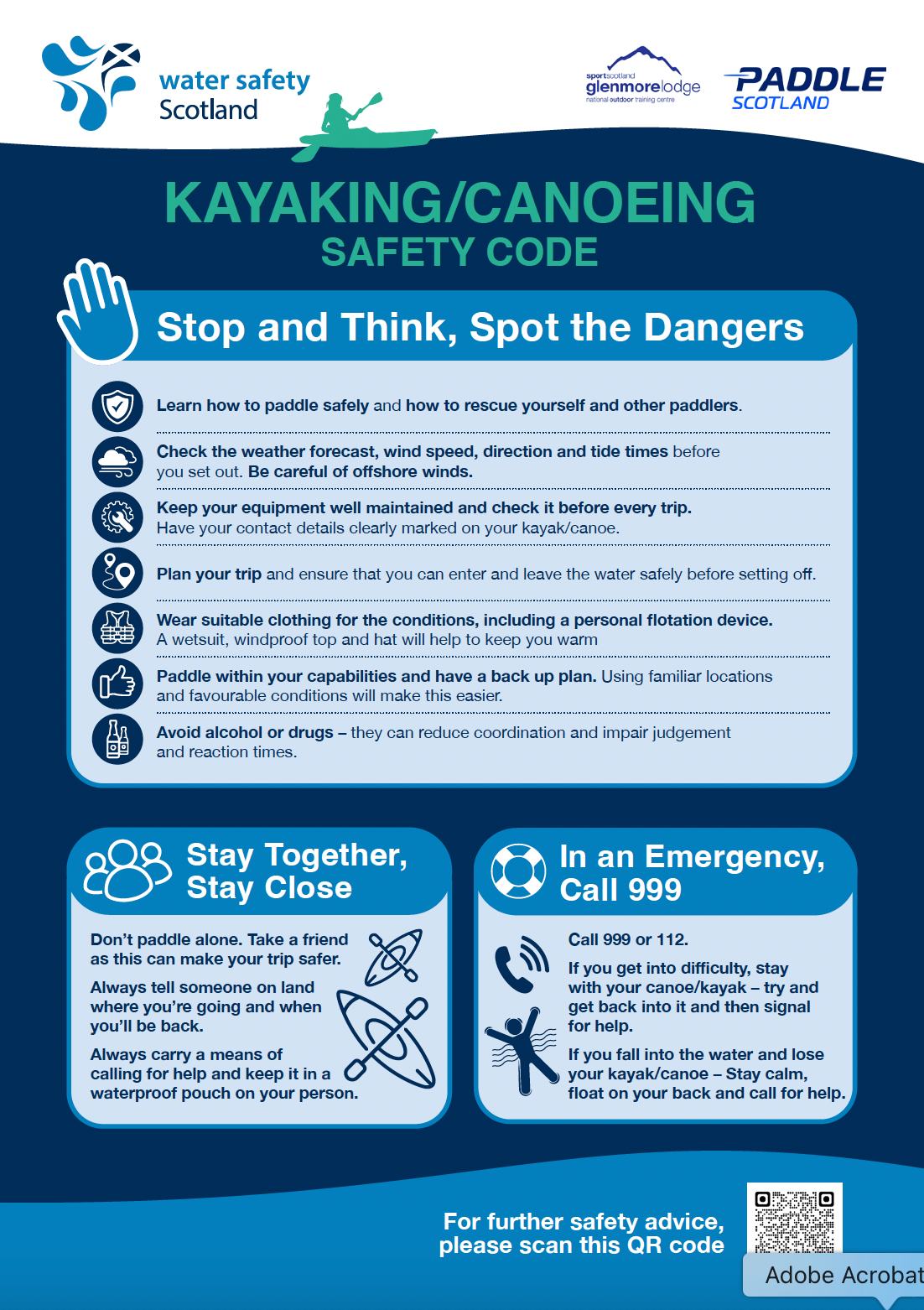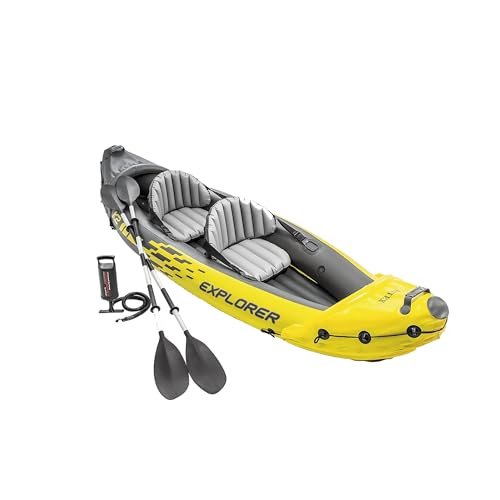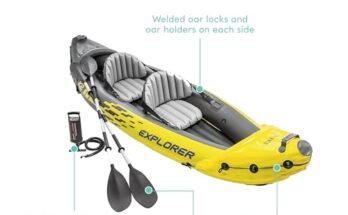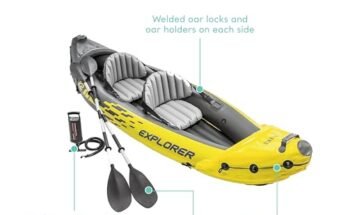Kayaking can be an exciting way to explore the water and enjoy nature. But have you ever thought about the risks that come with it?
Understanding the dangers of kayaking is crucial for your safety. If you want to stay safe and make the most of your time on the water, you need to know what to watch out for. Keep reading to discover the hidden risks and how you can protect yourself every time you paddle.

Common Kayaking Hazards
Kaiaking is a fun water sport but it has risks. Knowing these hazards helps you stay safe.
This guide covers four main dangers every kayaker should know.
Capsizing Risks
Capsizing happens when your kayak flips over in the water. It can be scary and dangerous.
Causes include sudden waves, losing balance, or hitting rocks. Wearing a life jacket helps a lot.
Hypothermia Threats
Hypothermia is when your body loses heat too fast. Cold water can cause this quickly.
- Wear waterproof clothing to stay dry.
- Use a wetsuit or drysuit in cold waters.
- Keep moving to keep warm.
- Know signs like shivering and confusion.
Strong Currents And Rapids
Strong currents and rapids can sweep kayakers off course or flip the kayak.
| Hazard | Danger | Safety Tip |
| Strong Currents | Push kayak quickly downstream | Learn to steer and avoid fast water |
| Rapids | Cause sudden drops and waves | Scout rapids before paddling |
| Whirlpools | Pull kayak underwater | Stay clear of spinning water |
Weather Challenges
Weather can change fast on water. Wind, rain, and storms make kayaking risky.
Tips to handle weather:
- Check the forecast before you go.
- Bring waterproof gear.
- Be ready to stop or head back.
- Watch the sky for sudden changes.
Equipment Failures
Kayaking can be dangerous if your equipment fails. Gear problems can cause accidents on the water. Knowing the risks helps you stay safe.
Here are some common equipment issues that kayakers face. Understanding these can prepare you better for your trips.
Paddle Breakage
Paddle breakage is a serious problem. A broken paddle can leave you stranded far from shore. This can lead to exhaustion or drifting into dangerous areas.
- Paddles may break from hitting rocks or hard surfaces.
- Cheap or old paddles are more likely to fail.
- Strong waves and currents put extra pressure on paddles.
- Always carry a spare paddle or repair kit.
Kayak Structural Issues
Structural damage to a kayak can cause leaks or instability. Cracks, holes, or broken parts increase the risk of capsizing. Regular checks help spot problems early.
| Issue | Cause | Effect |
| Cracks | Impact with rocks or debris | Water leaks, weak hull |
| Holes | Puncture from sharp objects | Flooding, sinking risk |
| Broken Rudder | Wear and tear or collision | Loss of steering control |
| Loose Seals | Old or damaged seals | Water entry, reduced buoyancy |
Life Jacket Malfunctions
Life jackets save lives but only if they work properly. Malfunctions can stop them from inflating or keeping you afloat.
Common life jacket problems include:
- Faulty inflation mechanisms
- Torn or damaged fabric
- Straps that do not fasten securely
- Incorrect sizing causing poor fit
Always check your life jacket before kayaking. Test the inflation and inspect for tears or loose straps.
Environmental Dangers
Kayaking can bring people close to nature. This closeness can cause risks to the environment. Understanding these dangers helps keep nature safe.
Environmental dangers in kayaking come from wildlife, obstacles in water, and pollution. Each one can harm both paddlers and nature.
Wildlife Encounters
Animals near water may act defensively if surprised or threatened. Kayakers might disturb their homes or nesting places. Some animals can be dangerous if they feel trapped.
- Keep a safe distance from animals
- Do not feed or touch wildlife
- Observe quietly without sudden movements
- Learn about local animal behavior before kayaking
Obstacles And Debris
Floating logs, rocks, and branches can block paths and cause accidents. Some debris may be hidden under water, making it harder to see. These obstacles can damage kayaks or cause capsizing.
| Type of Obstacle | Risk |
| Floating Logs | Capsizing or hull damage |
| Rocks | Injury or kayak puncture |
| Branches | Entanglement or tipping over |
| Man-made Debris | Pollution and injury risk |
Water Contamination
Polluted water can harm kayakers and wildlife. Chemicals, trash, and waste lower water quality. Contact with dirty water can cause skin problems or sickness.
To reduce water contamination risks:
- Check water quality reports before kayaking
- Avoid areas with visible pollution or waste
- Do not throw trash into water
- Clean equipment after use to prevent spreading contaminants
Human Factors
Kayaking can be risky if people do not prepare well. Human factors often cause accidents on the water.
Understanding these dangers helps paddlers stay safe and enjoy their time outdoors.
Inexperience And Poor Skills
New kayakers may lack the skills needed to control the kayak. This can lead to tipping or getting stuck in rough water.
Without proper training, paddlers might not know how to handle emergencies or strong currents.
- Struggling to steer or stop the kayak
- Difficulty recovering after tipping over
- Poor understanding of water conditions
- Not knowing how to use safety gear
Fatigue And Dehydration
Kayaking needs physical effort, which can cause tiredness. Fatigue makes it hard to paddle well and react quickly.
Not drinking enough water can lead to dehydration. This lowers energy and focus, raising the risk of accidents.
- Slower reaction times
- Poor decision making
- Muscle cramps and weakness
- Increased chance of heat illness
Ignoring Safety Protocols
Some paddlers skip important safety steps. Not wearing life jackets or checking the weather can cause serious trouble.
Ignoring signals from guides or other boaters puts everyone at risk. Safety rules are there to protect all kayakers.
- Skipping life jacket use
- Not informing others about the trip plan
- Ignoring weather warnings
- Failing to check kayak and gear condition
Preventive Safety Measures
Kayaking is fun but can be risky if safety is ignored. Taking steps to stay safe reduces dangers.
Knowing how to prevent accidents helps you enjoy kayaking with less worry.
Proper Gear Selection
Choosing the right gear is key for safety on water. Gear protects you and helps you stay afloat.
Always wear a life jacket that fits well. Use a helmet in rough waters. Pick a kayak that suits your skill level.
- Wear a certified life jacket (PFD)
- Use a helmet on rocky or fast water
- Dress for water temperature, not air
- Bring a whistle or signaling device
- Choose a paddle that feels comfortable
Skill Development And Training
Learning kayaking skills lowers the risk of accidents. Practice makes you confident and ready for challenges.
Take lessons from qualified instructors. Practice getting in and out of your kayak safely. Learn how to handle strong currents.
- Attend beginner and advanced kayaking classes
- Practice self-rescue techniques
- Learn how to read water currents
- Train in different water conditions
- Practice paddling and steering skills
Weather Awareness
Checking weather before kayaking keeps you safe from sudden storms or waves. Weather changes can be dangerous.
Look at weather forecasts and water conditions. Avoid kayaking in strong winds or lightning storms.
- Check local weather reports before you go
- Watch for changes in wind speed and direction
- Avoid kayaking in fog or heavy rain
- Leave the water if weather worsens suddenly
- Know the tide and current schedules
Emergency Preparedness
Being ready for emergencies saves lives. Know what to do if you capsize or get lost.
Carry safety tools and tell someone your plans. Practice using emergency gear before heading out.
- Carry a waterproof phone or radio
- Bring a first aid kit
- Use a paddle leash to avoid losing your paddle
- Tell someone your kayaking route and return time
- Learn how to signal for help


Frequently Asked Questions
What Are The Common Dangers Of Kayaking?
Common dangers include capsizing, strong currents, cold water, and collisions. These risks can cause injuries or drowning if unprepared. Proper training, safety gear, and weather awareness reduce these dangers significantly.
How Can Weather Affect Kayaking Safety?
Bad weather like storms and high winds create rough waters and poor visibility. These conditions increase the chance of accidents and hypothermia. Always check forecasts and avoid kayaking during severe weather.
Is Kayaking Safe For Beginners?
Kayaking can be safe for beginners with proper instruction and safety equipment. Learning basic skills and understanding water conditions are crucial. Beginners should start in calm waters and use life jackets at all times.
What Safety Gear Is Essential For Kayaking?
Essential gear includes a life jacket, helmet, whistle, and appropriate clothing. A paddle leash and waterproof communication device also improve safety. These items protect kayakers and help in emergencies.
Conclusion
Kayaking offers great fun and adventure on the water. Still, it comes with real risks to know. Strong currents, cold water, and sudden weather changes can cause danger. Wearing a life jacket helps keep you safe. Always plan your trip and check the weather first.
Stay close to shore if you feel unsure. Learning basic skills makes kayaking safer and more enjoyable. Remember, being prepared helps you avoid accidents and enjoy your time outdoors. Stay alert, respect nature, and paddle safely every time.



